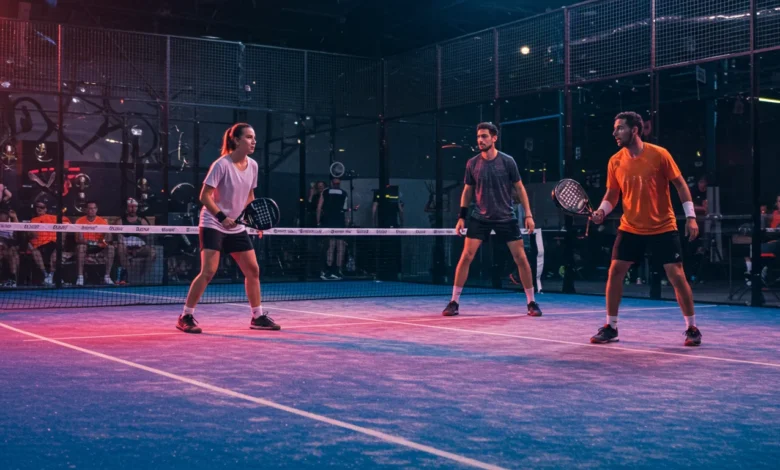Explore how NLPAdeL merges AI-driven NLP techniques with padel, enhancing game strategy and communication. Whether you’re into technology or sports, discover how this intersection brings innovative solutions to both communities.
Introduction to NLPAdeL and its meaning
Welcome to the thrilling world of NLPAdeL, where the realms of natural language processing meet the dynamic sport of padel. Imagine a scenario where technology enhances athletic performance and transforms communication in sports. That’s exactly what NLPAdeL is all about. As we dive into this innovative intersection, you’ll discover how advanced algorithms can analyze player performance and deliver insights that were once unimaginable in the realm of padel. Get ready to unravel the fascinating connections between cutting-edge AI technology and one of today’s fastest-growing sports!
History of Padel and NLP
Padel has a rich history dating back to the 1960s, originating in Mexico. It quickly gained popularity across Spain and other countries, evolving into a dynamic and social sport. The game’s blend of tennis and squash captivated sports enthusiasts, leading to the development of dedicated courts and professional leagues.
On the other hand, Natural Language Processing (NLP) emerged from computational linguistics in the mid-20th century. Researchers sought ways for machines to understand human language. Over the decades, advancements in algorithms and machine learning have transformed NLP into an integral part of various industries.
Padel and NLP each excel in their domains—physical and cognitive. Their integration through NLPAdeL offers new ways to use technology for player improvement and game experience.
What is Natural Language Processing (NLP)?
Natural Language Processing, or NLP, is a field at the intersection of computer science and linguistics. It focuses on enabling machines to understand, interpret, and respond to human language in a way that feels natural.
NLP encompasses various techniques designed to analyze text data. These include tokenization, sentiment analysis, and named entity recognition. By breaking down language into manageable components, computers can grasp context and meaning.
Machine learning plays an essential role in advancing NLP capabilities. Algorithms learn from vast amounts of textual data to improve their accuracy over time. This allows for more effective communication between humans and machines.
Applications are widespread—from chatbots providing customer support to advanced translation services bridging language barriers. The goal is clear: making technology more intuitive by enhancing its ability to process human languages seamlessly.
The Basics of Padel: Rules, Equipment, and Gameplay
Padel is a dynamic sport that combines elements of tennis and squash. It’s played on an enclosed court, smaller than a traditional tennis court. The walls are an integral part of the game, allowing players to utilize them strategically.
Each match typically involves two teams of two players each, known as doubles. Scoring resembles tennis, with games played to four points and sets won by the first team to win six games.
Equipment includes padel rackets made from composite materials for durability and control. Players also use low-pressure balls designed specifically for this fast-paced sport.
The gameplay encourages quick reflexes and teamwork, making communication vital among partners. With its unique blend of strategy and agility, padel is not only exciting but accessible for all skill levels.
You Might Also Like : NTDTVJP
How is NLP used in Padel Sports?
NLP analyzes padel commentary and online discussions, offering insights for players, coaches, and fans through trend and sentiment evaluation.
This technology enables coaches to better understand player performance by consolidating feedback from multiple sources. They can gain insights into athletes’ mental states based on their communication patterns.
For players, personalized training programs are developed from data collected through NLP applications. These systems analyze verbal cues during practice sessions to tailor drills that enhance skills or address weaknesses.
Moreover, chatbots powered by NLP provide real-time assistance to enthusiasts looking for tips or strategies. Fans also benefit; they receive curated content related to their favorite teams while enjoying a more interactive experience during games.
NLP in padel enables data-driven decisions and advances gameplay, connecting analysis and performance improvement in a single ecosystem.
Advantages of Using NLP in Padel
Natural Language Processing (NLP) brings a fresh approach to the world of padel. By leveraging NLP, players and coaches can quickly analyze vast amounts of game data.
Imagine being able to dissect player performance through match reports generated in real time. This enables targeted feedback, thereby enhancing training efficiency.
Moreover, NLP tools can help in understanding player sentiments from social media interactions or fan forums. Understanding what fans think can inform marketing strategies and enhance community engagement.
For coaches, access to advanced analytics means they can tailor their coaching methods based on individual needs. This personalized approach leads to better player development.
Additionally, multilingual support offered by NLP facilitates communication between international teams and players. It breaks down language barriers that might otherwise hinder collaboration and learning opportunities within the sport.
Challenges and Limitations of NLPAdeL
NLPAdeL, while promising, faces several challenges. One significant hurdle is the complexity of language itself. Natural Language Processing can struggle with context and nuances in human speech, making it difficult to analyze player feedback or sports commentary effectively.
Another limitation arises from the diversity of padel terminology across different regions. Variations in slang or jargon can hinder NLP models that rely on a standard dataset for training. This inconsistency may lead to misunderstandings or misinterpretations of critical information.
Data availability also poses an issue. While there’s extensive data in mainstream sports analytics, specific insights tailored for padel are scarce. Gathering enough quality data to train effective NLP systems remains a daunting task.
Lastly, user adoption is crucial but challenging. Players and coaches may be hesitant to embrace new technology without clear demonstrations of its benefits within their practice routines or performance evaluations.
Future Possibilities for NLPAdeL
The future of NLPAdeL holds immense potential. As technology advances, we could witness innovative applications that reshape how players and coaches interact with the sport.
Envision training programs powered by NLP algorithms that analyze player performance in real time, offering tailored feedback to enhance skills and strategies.
Moreover, fan engagement can take a leap forward. Natural language processing might facilitate interactive platforms where fans receive insights about their favorite players or upcoming matches through conversational AI.
We may also see improved commentary systems that provide instant analysis during matches, making it easier for audiences to grasp complex gameplay dynamics.
As data collection becomes more sophisticated, the integration of NLP into analytics will likely transform game strategies, giving teams a competitive edge they never had before. The merging of these two worlds promises exciting advancements in both sports and technology.
Conclusion: The Exciting Intersection of NLP and Padel
As the worlds of Natural Language Processing and padel sports come together, exciting opportunities take shape. NLPAdeL creates a unique intersection where technology delivers tangible benefits, transforming how players enhance their performance, how coaches make data-driven decisions, and how fans connect with the game.
Athletes can receive real-time feedback using NLP-driven analysis. Coaches can tailor training programs based on insights gained from player communications, thereby enhancing strategies for success.
Moreover, fans will benefit from personalized content, interactive match insights, and real-time access to player statistics, all made possible by the integration of NLP. These enhancements could redefine padel fan experiences and deepen community involvement.
The future holds immense potential as advancements in machine learning and AI continue to evolve. The merging of these disciplines promises not only to elevate performance but also to create a richer community around the sport we love.
NLPAdeL is charting new territory, connecting language technology with padel to reshape how we play, learn, and stay engaged in this evolving sport.

